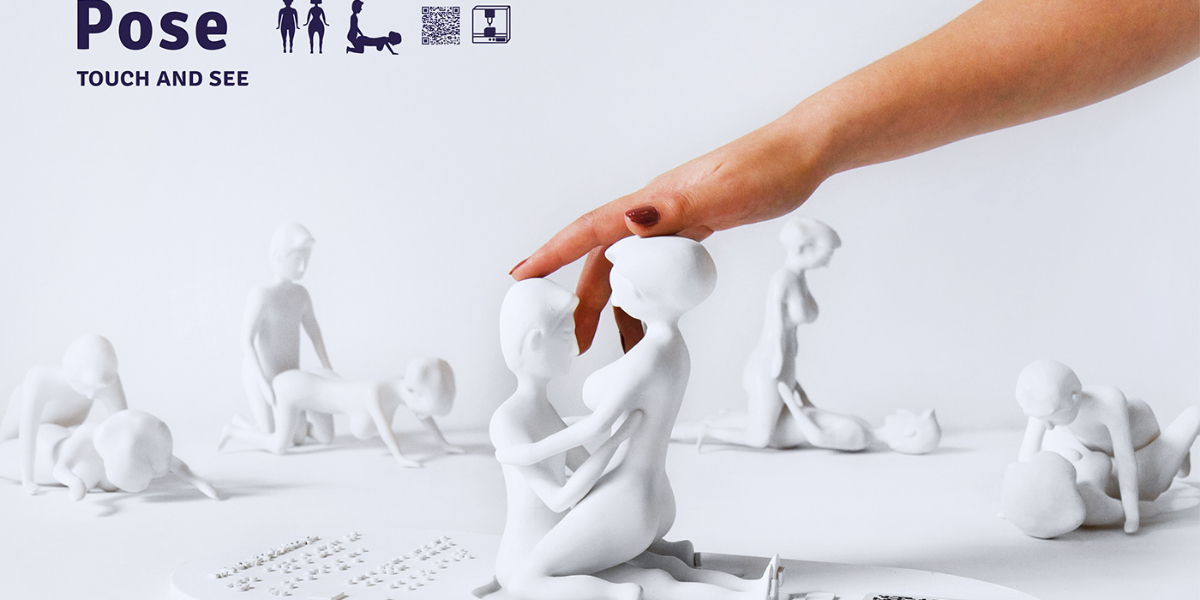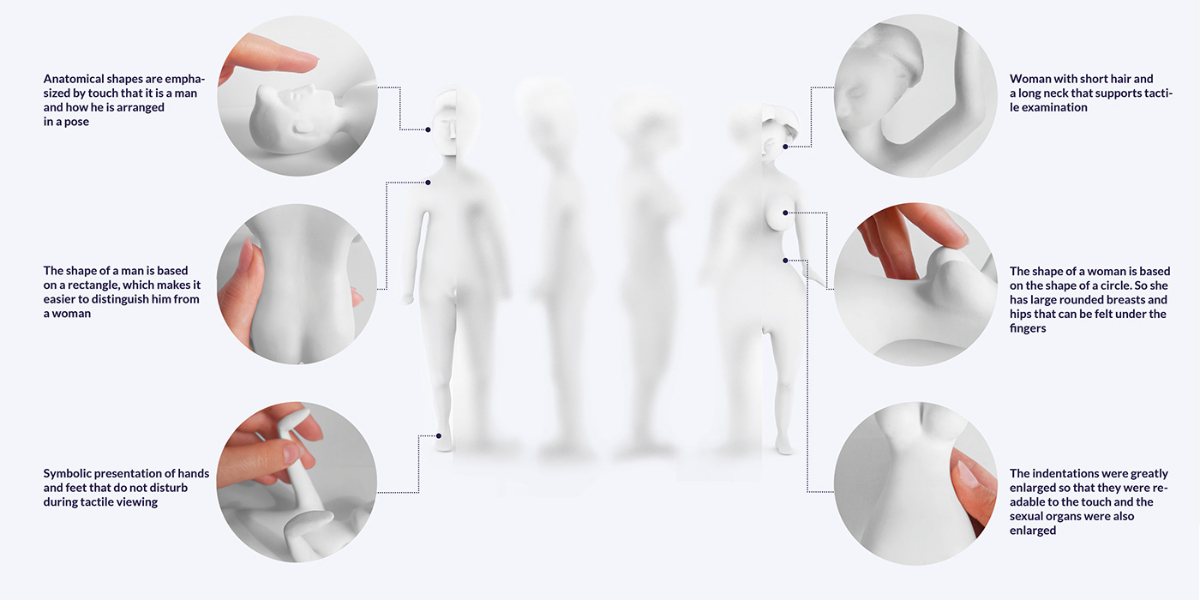AÑO
2023
CATEGORÍA
Aprendizaje y Juego
OBJETIVOS
Salud y bienestar, Educación de calidad, Confianza, tolerancia y empatía
PAL. CLAVE
sex education, blind, Disability
PAÍS
Poland
CRÉDITOS
Karolina Kruszewska
LINK
https://www.behance.net/gallery/149364347/Pose-sex-education-set-for-blind-people
Pose
sex education set for the blind
How does it work?
‘Pose’ is an educational sex set for the blind created by Polish designer Karolina Kruszewska in collaboration with sex educator Dr. Dagn? Kocur. Developed as part of Kruszewska’s master’s thesis at the Academy of Fine Arts in Katowice, the project offers extensive knowledge about sex positions and identifying anatomical features to help guide the visually impaired in intimate acts. This information is released as 13 audio films on YouTube and 3D-printed figurines depicting the five basic sex positions. The models come with a support base to stabilize them. Each base is printed with instructions in Braille and features a QR code that links to the audio description of the said position. While the youtube films work perfectly as standalone features, the designer encourages users to listen to the narrative while exploring the figurines.
Why is it needed?
It's making sex education more accessible to those with disabilities.
How does it improve life?
Pose is a project dedicated primarily to individual users, sex educators, and organizations. The main goal of the project was to make knowledge available to the blind, hence the decision to record descriptions that everyone could listen to on YouTube. So far, in Poland, there is no product for sex education aimed at blind people. So, this is an innovative project in Europe, where this topic is surprisingly neglected. The descriptions were rewritten with sex educator Dagna Kocur. They are more detailed and pay attention to using the senses other than sight, so as not to exclude those with sensory disabilities,’ writes the designer.
The second goal was to describe the appearance of each 3D-printed figure. For this purpose, Kruszewska incorporated Braille reading, a tactile feature considered the closest way for blind people to ‘perceive’ the position depicted by the models.





